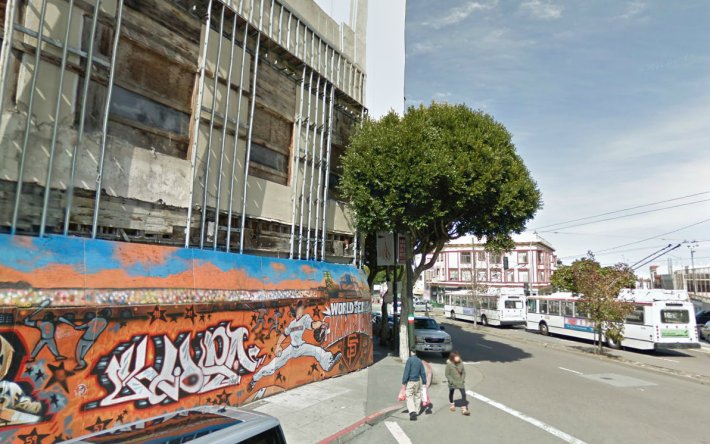Central Subway Pagoda Deal Will Take $9 Million From Muni Operating Funds
5:12 PM PST on February 20, 2013
Updated 2/23
A deal struck by the SF Municipal Transportation Agency to extract tunnel drills at the site of the abandoned Pagoda Theatre will cost the agency an estimated $9.15 million. While the lease deal with building owner Joel Campos allows the SFMTA to move forward with an extraction plan that's less disruptive to the North Beach neighborhood than the original one, agency Director of Transportation Ed Reiskin said the money will come out of Muni's operating budget, unless it receives an additional grant from the Federal Transit Administration to plug the gap, according to the SF Examiner.
The news confirms fears that the Central Subway's ever-ballooning costs will eat away at funds needed to provide existing Muni service. Put in terms of bus service lost, $9.15 million equates to roughly 100,000 service hours, based on a back-of-the-envelope calculation using the cost savings estimated by the SFMTA when it proposed service cuts in 2010.
"MUNI bus service to North Beach and Telegraph Hill has been slashed continually for years due to operational funding shortfalls," said Mike Sonn, chair of the Telegraph Hill Dwellers Transportation and Parking Committee, in a letter sent today to Reiskin and the Board of Supervisors [PDF]. "Today, residents and visitors to North Beach no longer have even one direct bus route to or from downtown that runs during non-rush hour times. And in MUNI's proposed new 'Transit Effectiveness Plan,' service to North Beach would be reduced even further through cuts to the 8X line."
THD is urging the SFMTA to instead "pursue the less-expensive and less-disruptive alternative to leave the drilling machine under the ground near the final Central Subway stop on Washington Street."
Though the Pagoda plan initially had support from Central Subway skeptics because it could open the door for a future North Beach station, the site's property manager, Martin Kirkwood, told the Examiner Campos intends to move forward with plans to develop the site, ruling out the possibility of turning it into a station.
"Diverting $9.15 million in precious funds from MUNI's operational budget will steal that money directly from the bus service we desperately need for an unnecessary drilling machine extraction site we absolutely don’t," said Sonn.
Update 2/23, 1:00 p.m.: Responding in the comment section on this article, SFMTA spokesperson Paul Rose said that the funds would not come from the operating budget, as Reiskin stated, but from reserves in the city's General Fund:
While we respect concerns for Muni and its budget, some of these details misrepresent the facts about Muni service to North Beach and the Pagoda Palace plan. Regarding the Pagoda deal, we will not use our current operating budget to pay for the lease or the additional construction costs. Instead, the funds will initially come from our General Fund reserve, which is larger than expected due to a stronger economy. The two-year lease includes $400k in yearly rent, but all other payments up to a maximum of $3.15 million are conditional upon our approval of ownership’s out-of-pocket costs. Going forward, we will work with the Federal Transit Administration to secure their approval to reimburse these costs. With the addition of the Central Subway, the T Third Line is projected to become Muni’s most utilized light rail line, with more than 65,000 boardings per day by 2030. That means less crowded streets and buses, and more efficient travel through downtown, Chinatown, North Beach and beyond. Contrary to what is stated, Muni provides North Beach residents and visitors a variety of transit options, including the 8x, 30, 45 and 41 bus routes and the historic cable cars, for travel to and from the Financial District, Union Square and other downtown areas. Most of these routes operate all day, within and outside of rush hour times. Also, through programs like the Transit Effectiveness Project, we aim to add transit-only lanes, widen streets and improve transit signal priority to make bus routes throughout the city more efficient, faster and reliable.
Stay in touch
Sign up for our free newsletter
More from Streetsblog San Francisco
SFMTA Starts West Portal Outreach
Agency presents plans to block traffic from crossing in front of the train station




